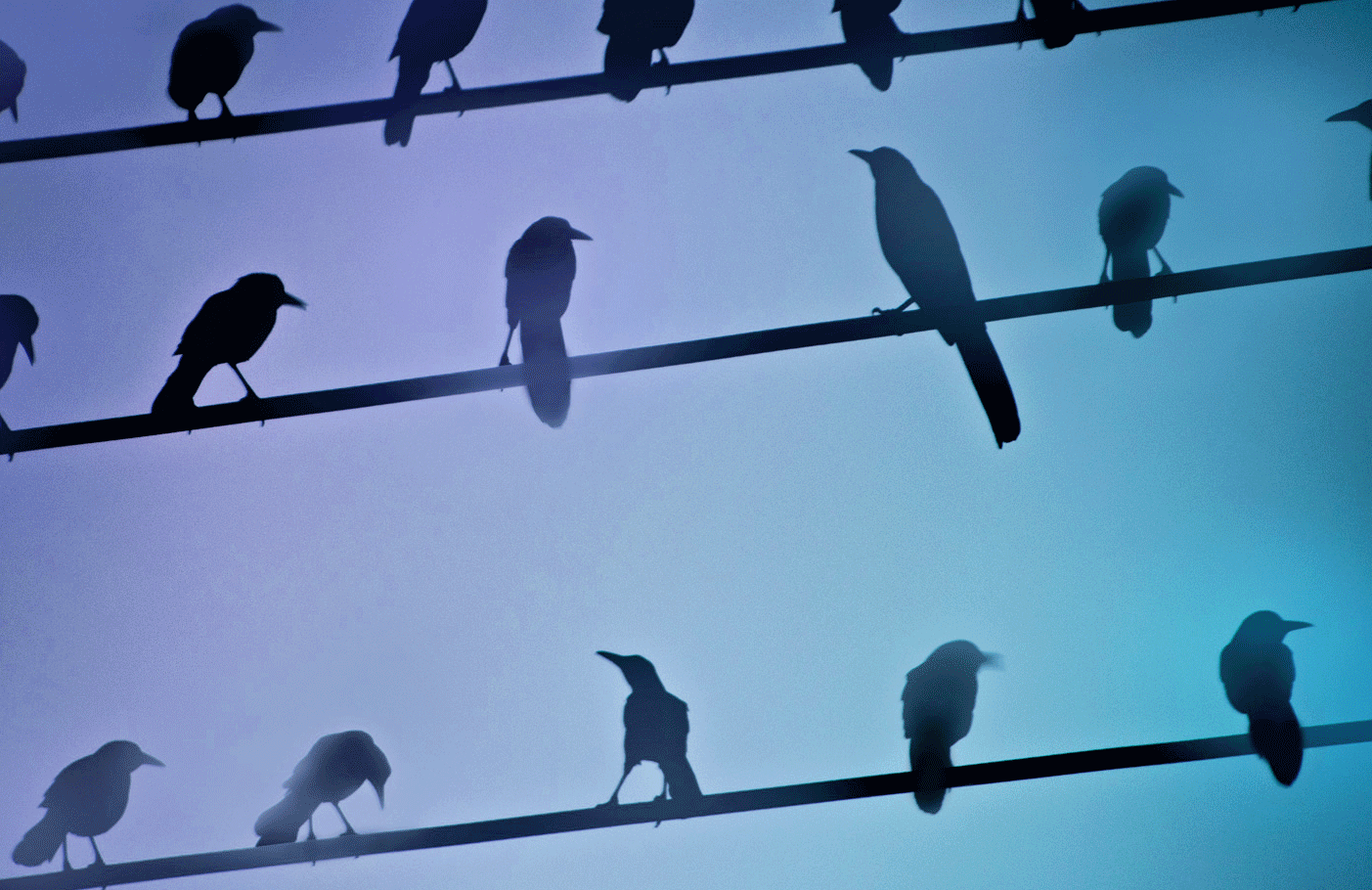
Earlier this summer, grackles, long a nemesis to University of Texas at Austin students and employees, raised their game, at least according to the Austin American-Statesman:
Nesting grackles on the UT campus have become aggressive enough that UT’s Environmental Health & Safety has warned pedestrians to not approach baby birds and to even consider taking alternate routes.
And as school approaches and new students put themselves in the fearsome line of fire, let me speak for a moment in the great-tailed grackle’s defense. No creature likes strangers approaching their babies while they are away. An alternate route would be advisable around any animal’s young. You wouldn’t approach strangers’ children at a daycare center, would you?
Secondly, grackles on the UT campus have been a problem for years, and there are few, if any, measures the administration has not tried to get rid of these so-called “devil birds.” Rubber snakes. Air cannons. Plastic owls. Weird helium balloons with human eyes painted on them. Hacking away at the campus’s live oaks and other foliage to remove nesting habitat, and finally, blasting away at them with shotguns.
Nothing has ever worked. The great-tailed grackles love the Austin campus, and we should just get used to that fact.
Yes, they have their drawbacks. As a freshman at UT in 1989, I can well remember having to walk under their roosts in the spring; one stretch of my walk to class was always a half-inch deep in grackle waste. One warm, steamy morning, I almost keeled over from the stench. But bear in mind I’d been out until two the previous night and was headed to a nine o’clock class, so part of that was on me. It wasn’t the fault of those robotically cackling, jeering birds that I chose to drink Long Island iced teas until a few hours before geography class.
Resistance is futile. The grackle will always be with us, at UT and in grocery store parking lots and busy intersections from Brownsville to Paris. Richard Gibbons, conservation director of the Houston Audubon Society, does not believe that a flip has suddenly switched in their black-feathered heads—they have not suddenly decided to go on the attack, as the Statesman implied.
“I don’t think they are getting more aggressive,” Gibbons recently wrote to me. “The male great-tailed grackle defends the nesting territory, which may be a young live oak in the H-E-B parking lot. I’ve seen pedestrians dive-bombed by [grackles] nesting in palm trees. We’re perceived as a threat, and a peck on the head is their modus operandi. This is the case for many bird species. Wildlife biologists working in seabird nesting colonies wear hardhats and will often attach a tall plume or some other extension. The idea is to make it quite unpleasant for the perceived predator to consider [making a] meal of [their] nestlings.”
Grackle attacks on Texans are nothing new. Way back in 1950, the Harlingen Valley Morning Star ran a series of articles about one highly aggressive grackle who loathed men. “Pugnacious Grackle Attacks Bold Harlingen Pedestrians” ran the headline of the first of at least two such articles; three days later the people of Harlingen were informed that “Man-Hating Grackle Still Dive-Bombing.”
This particular grackle, for a brief time, ran the streets near that Valley city’s long-gone Madison Hotel. From its palm tree roost, it would swoop down on men—never women—and wreak havoc. To no avail, the Morning Star editors even sent out a brave female reporter to attempt to elicit an attack. “She tried her best to lure it down so she could get her picture in the paper with it, but the bird wouldn’t cooperate,” they reported.
Next, the paper sent out photographer Carl Frith, who was instructed not to return to the office “until he had a picture of that bird attacking someone.” He never got his picture. “The bird unexpectedly dived at Frith as he alighted from his car,” the article noted. “It swooped at attorney Nate Koppel as he watched Frith trying to get a picture of it. It feigned an attack on other passersby out of the range of the camera.”
The anonymous reporter allowed himself some noir-ish editorializing. You can practically smell the bourbon and Camels and hear the moody jazz when you read lines like this:
“Just why the bird has taken such a dislike to humanity, men in particular, no one even ventures to guess. Some date its attacks from the day a baby grackle fell from a palm tree in the park. Others just don’t know. It’s worse than a nagging wife. It constantly scolds, and it flies from one perch to the next, just waiting for someone to attack.”
So Longhorns (especially men), count yourselves fortunate you aren’t a victim of the Harlingen Grackle, the fiercest this state has ever known. Maybe UT students should start wearing hard-hats, as Gibbons and his friends do around nesting seabirds—at least for the spring semester, when the grackles have their babies and are feeling all ornery.
“Or maybe just hold up one of those big foam number one hands,” Gibbons suggests. “The grackle gauntlet [has become] a standard cultural fabric of UT. Hook ’em Horns! Run, duck, cover!”






